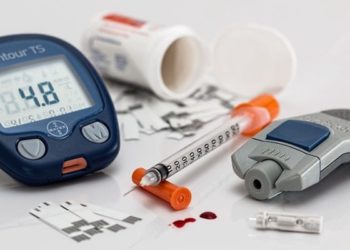2 Minute Medicine Rewind December 16-22, 2013
Image: PD
In this section, we will highlight the key high-impact studies, updates, and analyses published in medicine during the past week.
Studies ascertaining the optimal length of antiplatelet therapy after placement of drug-eluting stents have provided mixed evidence, with the most current recommendations being for at least 6-12 months of therapy. This duration may prevent stent thrombosis, it also places patients at a higher risk for bleeding events. In this open-label, randomized non-inferiority study, 3119 patients at multiple sites in Brazil were assigned to receive clopidogrel for either 3 or 12 months, in addition to aspirin indefinitely, after getting a zotarolimus-eluting stent. The primary outcome was net adverse clinical and cerebral events, including death, stroke, myocardial infarction, and major bleeding. At one year, there was no significant difference in occurrence of the primary outcome between the short-term and long-term groups (6.0% and 5.8% respectively, p=0.002 for noninferiority). Additionally, between 90 days and 1 year, there was no significant association between therapy duration and occurrence of death or cerebrovascular events (HR 1.19, 95%CI 0.74-1.90). Notably, stent thrombosis after 90 days occurred in 0.3% of the short-term therapy group vs 0.1% of the long-term group, though this was not statistically significant (HR 3.97, 95%CI 0.44-35.49).
Long-Term Multivitamin Supplementation and Cognitive Function in Men
The benefits of multivitamin supplementation have long been debated, and their effect on cognitive decline is inconclusive. In this randomized, double-blinded trial, 6,454 participants of the Physicians’ Health Study II were assigned to receive a daily multivitamin or placebo in order to probe the effects of vitamin supplementation in preventing cognitive decline. Throughout an average of 8.5 years of follow up, researchers found no differences in cognitive function between the two groups based on telephone-adapted tests for global function or verbal memory and fluency, a strong predictor of Alzheimer disease. The net difference between the multivitamin and placebo groups was -0.01 (p=0.53) for global composite score; -0.005 (p=0.80) for verbal memory score; 0.02 (p=0.79) for the Telephone Interview for Cognitive Status score; and -0.07 (p=0.59) for category fluency score. The study participants as a whole had a slower rate of decline than would be expected in the general population, so it is possible that a greater difference would be seen in other groups.
Physical activity as a modifiable risk factor for cardiovascular disease in people with impaired glucose tolerance has been demonstrated in observational studies, but the effect has been difficult to quantify. In this retrospective cohort study, records of 9,018 participants in the NAVIGATOR (Nateglinide and Valsartan in Impaired Glucose Tolerance Outcomes Research) trial were analyzed for the association between physical activity as recorded by a pedometer and the risk of cardiovascular events. Each increase in ambulatory activity, in increments of 2000 steps, was associated with a 10% decrease in risk for cardiovascular events (HR 0.90, 95%CI 0.84-0.96, p=0.0014). Likewise, each 2000-step increase in activity from baseline (measured at 12 months) was also associated with an 8% decrease in cardiovascular events (HR 0.92, 95%CI 0.86-0.99, p=0.0271), independent of the baseline number of steps (p=0.58 for interaction). Results were also independent of prior history of cardiovascular disease (p=0.62), sex (p=0.66), and age (p=0.14).
Use of Selective Serotonin Reuptake Inhibitors During Pregnancy and Risk of Autism
Recent studies have linked selective serotonin reuptake inhibitor (SSRI) use during pregnancy with an increased risk for autism, though a causal association has not been thoroughly investigated. In this retrospective analysis, 658,755 records (all births in Denmark from 1996-2005) were analyzed for an association between SSRI use by mothers before or during pregnancy and the development of autism spectrum disorder. In all, 1% of mothers received SSRIs during pregnancy. There was a non-significant increase in risk for autism spectrum disorder in children who had any exposure to SSRIs in-utero (adjusted HR 1.20, 95%CI 0.90-1.61). SSRI use during the first trimester was also associated with an adjusted HR of 1.35 (95%CI 0.97-1.87). However, this may be confounded by the mother’s diagnosis of depression, as offspring of women who had used SSRIs within 2 years of, but not during, pregnancy were found to have an increased risk for autism spectrum disorder (adjusted HR 1.46, 95%CI 1.17-1.81).
One effort to control rising health care costs, particularly among seniors, has been the establishment of geriatric emergency departments. These are designed to increase senior comfort and safety, and they provide increased access to selected services in the hopes of improving care for seniors while reducing costs. In this retrospective pre/post-intervention study conducted 6 months before and after the opening of a senior ED in a large community hospital, records of new patients aged >65 or 55-64 were analyzed for recidivism at 30 and 180 days, admission rate, and length of stay of those admitted. There was a small but significant decrease in the risk of admission for those over 65 in the months following establishment of the senior ED (RR 0.93, 95%CI 0.89-0.98), but there was no difference in the length of stay (difference=0.02 days, 95%CI -0.03-0.07 days). Compared to seniors who presented prior to the implementation of the new ED, there was no difference in recidivism rates at 30 or 180 days (HR 1.09, 95%CI 0.95-1.23 and HR 0.99, 95%CI 0.91-1.08, respectively). In patients aged 55-64, outcomes did not change over the two periods.
By Kathleen Li and David Ouyang
©2012-2013 2minutemedicine.com. All rights reserved. No works may be reproduced without written consent from 2minutemedicine.com. Disclaimer: We present factual information directly from peer reviewed medical journals. No post should be construed as medical advice and is not intended as such by the authors or by 2minutemedicine.com. PLEASE SEE A HEALTHCARE PROVIDER IN YOUR AREA IF YOU SEEK MEDICAL ADVICE OF ANY SORT. Content is produced in accordance with fair use copyrights solely and strictly for the purpose of teaching, news and criticism. No benefit, monetary or otherwise, is realized by any participants or the owner of this domain.





